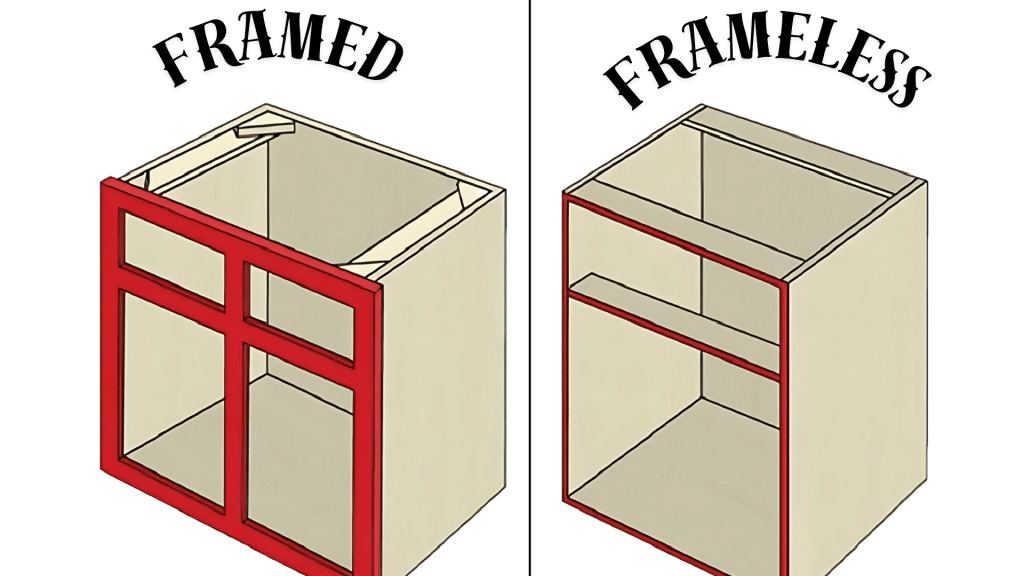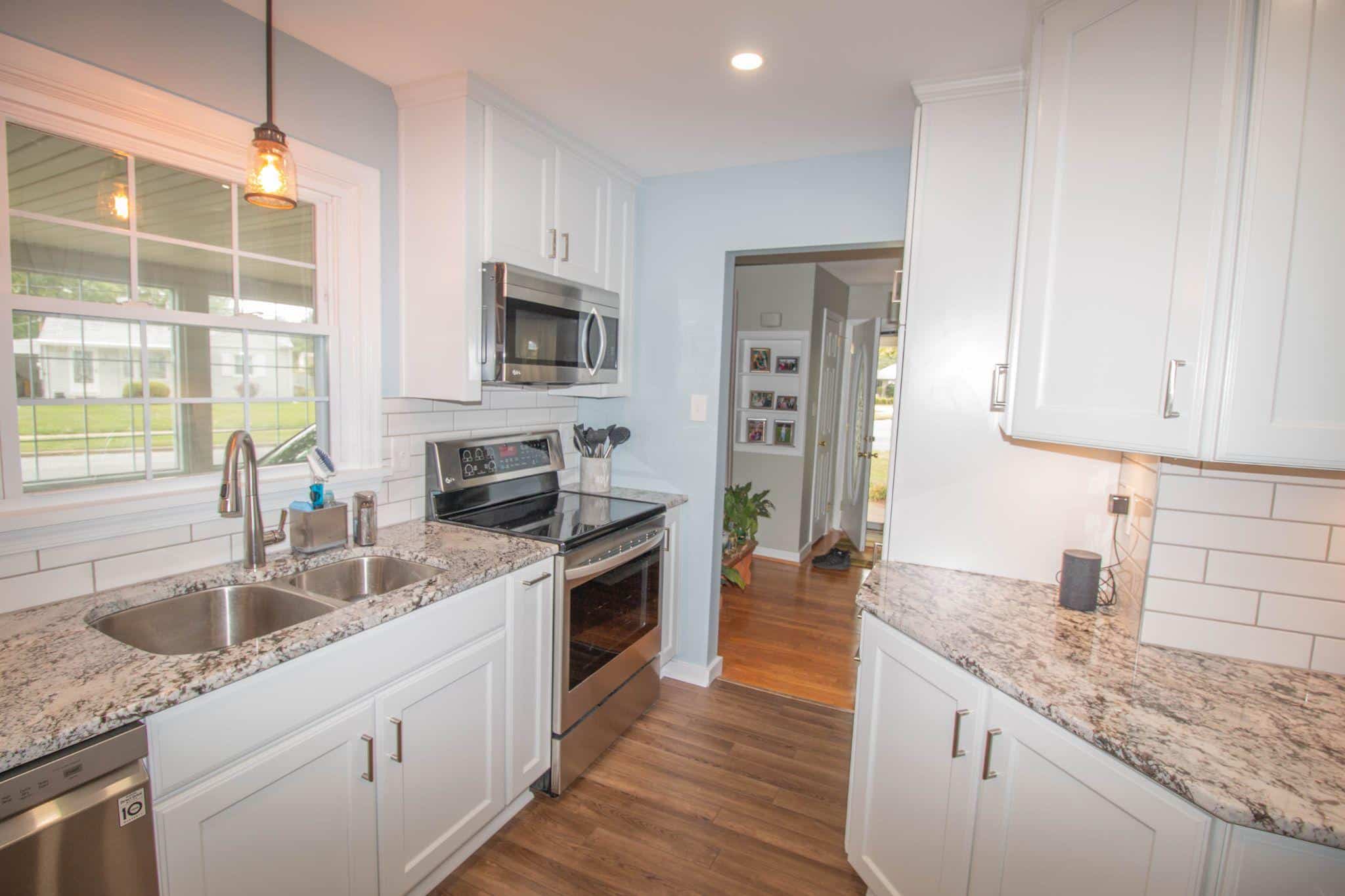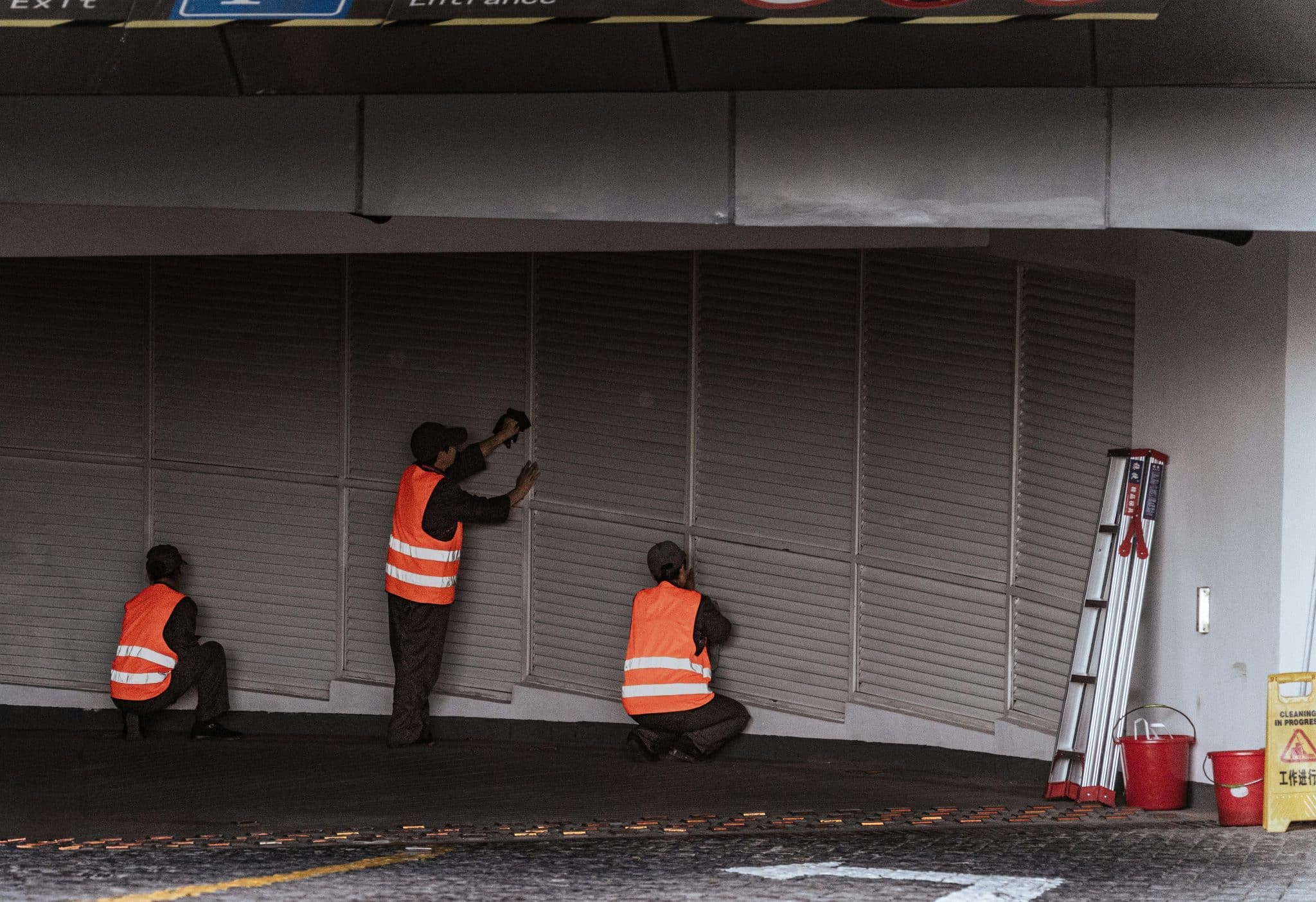Kitchen cabinets account for 60% of your kitchen’s visual impact and significantly influence both storage and style.
The choice between framed and frameless cabinets often confuses homeowners during remodeling projects.
Framed cabinets offer traditional charm with face frame construction, while frameless cabinets provide modern appeal with sleek, uninterrupted surfaces.
This decision impacts your kitchen’s appearance, storage capacity, installation costs, and long-term durability. Most homeowners struggle to understand the fundamental differences beyond basic looks.
This guide breaks down construction methods, style compatibility, storage benefits, and cost factors, and helps you determine which option is best for you.
You’ll learn which cabinet type best suits your kitchen style, budget, and storage needs.
What Are Framed Cabinets?

Framed cabinets feature a face frame construction with a wooden frame attached to the front of the cabinet box. This traditional building method creates a border around each door and drawer opening.
The face frame typically measures 1.5 to 2 inches in width and provides structural support to the entire cabinet.
Most framed cabinets utilize solid wood materials, such as oak, maple, or cherry, for the frame, with plywood or MDF used for the box construction.
These cabinets work best with classic kitchen styles, including farmhouse, traditional, and transitional design, where the visible frame adds character and depth.
| Pros of Framed Cabinets | Cons of Framed Cabinets |
|---|---|
| Added Durability – Face frame provides extra structural support and prevents warping | Less Interior Space – Frame reduces opening size by 1-2 inches on each side |
| Easier Wall Alignment – Frame helps hide gaps and uneven walls during installation. | Bulkier Appearance – Can make small kitchens feel more cramped and closed-in |
| More Door Styles – Compatible with inset, overlay, and partial overlay door options | Harder to Clean – Frame edges collect dust and require more detailed cleaning. |
| Cost-Effective – Generally less expensive than frameless options | Limited Access – Narrower openings make it harder to reach items in the back corners |
What Are Frameless Cabinets?

Frameless cabinets utilize a Euro-style construction, featuring a cabinet box with no face frame attached to the front.
Instead, doors and drawers mount directly to the cabinet box sides using hidden hinges. This design creates a clean, uninterrupted look with full access to the cabinet interior.
The cabinet box itself provides all the structural support, typically made from thick plywood or particleboard.
Frameless cabinets gained popularity in modern and minimalist kitchens during the 1960s and remain the go-to choice for contemporary designs.
They work perfectly with flat-panel doors and handleless designs, creating smooth, streamlined kitchen surfaces.
| Pros of Frameless Cabinets | Cons of Frameless Cabinets |
|---|---|
| Sleek Appearance – Creates smooth, uninterrupted lines without visible frames. | Precise Installation Required – Demands exact measurements and professional installation |
| Maximum Storage Access – Full-width openings provide 100% access to interior space. | Potential Flexibility Issues – May sag or shift over time without proper construction. |
| Easier to Clean – Smooth surfaces with no frame edges to collect dirt and grime | Higher Installation Costs – Requires specialized hardware and skilled contractors. |
| Modern Style Match – Perfect fit for contemporary, Scandinavian, and minimalist designs | Limited Repair Options – Harder to fix alignment issues once installed |
Cabinet Styles Compared: Framed vs. Frameless

Learn the key differences along with real-life insights to help you choose between framed and frameless cabinets for a kitchen that suits your style, space, and budget.
1. Construction
Framed cabinets feature a wooden face frame attached to the front of the cabinet box. This traditional method creates borders around door openings. The frame provides structural support and accommodates various door mounting styles.
Frameless cabinets have no face frame and use Euro-style construction. Doors mount directly to the cabinet sides with hidden hinges. The cabinet box provides all structural support without extra framing.
2. Aesthetic Style
Framed cabinets create a classic, traditional look with visible frame borders. They work best with farmhouse, country, and transitional designs. The frames add depth and visual detail to kitchen surfaces.
Frameless cabinets offer a modern, sleek appearance with smooth surfaces. They’re perfect for contemporary, minimalist, and Scandinavian styles. These cabinets create clean lines without visual interruptions.
3. Storage Capacity
Framed cabinets have reduced access due to 1.5-2 inch frame borders. The frame limits the opening size and makes it harder to reach items. The interior space feels more confined with visible boundaries.
Frameless cabinets provide maximum access with full-width openings. No frame obstruction means complete access to the interior space. Larger items fit through openings more easily.
4. Cost
Framed cabinets are more affordable with standard construction methods. Lower material and labor costs keep prices reasonable. Replacement parts and repairs are less expensive due to their wide availability.
Frameless cabinets typically cost 10-15% more than framed options. Specialized hardware and precise construction increase material costs. Professional installation adds to the total project expense.
5. Installation Difficulty
Framed cabinets install more easily and accommodate wall imperfections. The frame hides gaps and uneven surfaces during mounting. Standard contractors can handle installation without special training.
Frameless cabinets require precise measurements and perfect wall alignment. Professional installation is essential for proper hardware placement. Specialized knowledge is needed for hidden hinge systems.
6. Durability
Framed cabinets offer high durability with extra frame support. The frame prevents warping and sagging over time. Door repairs and adjustments are more straightforward when needed.
Frameless cabinets offer good durability due to their high-quality construction materials. Thick cabinet boxes must provide sufficient structural support. May sag if built with cheap materials.
Cabinet Cost Breakdown: Framed vs. Frameless
Explore the price differences between framed and frameless cabinets, including material, installation, and long-term value, to help you plan your kitchen renovation budget wisely.
| Aspect | Framed | Frameless |
|---|---|---|
| Price Range | $150–$400/linear ft | $200–$500/linear ft |
| Installation | Easier, DIY-friendly | Requires precision, professional installation |
| Hardware | Standard hinges | Euro-style hinges |
| Storage Space | Slightly less | More usable interior |
| Best For | Traditional, detailed styles | Modern, minimalist designs |
Which Cabinet Type Is Right for You?

Choose framed cabinets if you have a traditional, farmhouse, or transitional kitchen style and prefer classic looks with visible borders.
Choose framed when working with a DIY installation or a budget-conscious contractor, as they’re more forgiving and cost-effective.
Choose frameless cabinets if you have a modern, contemporary, or minimalist kitchen that needs maximum storage access and clean lines.
Go frameless when you have professional contractors and prioritize sleek appearance over cost savings.
Consider your kitchen size as well. Small kitchens benefit more from frameless storage access, while larger kitchens can handle framed cabinet bulk without feeling cramped.
Final Verdict
Choosing between framed vs frameless cabinets comes down to your kitchen style, storage needs, and budget priorities.
Framed cabinets work best for traditional homes seeking classic charm and budget-friendly installation.
Frameless cabinets suit modern kitchens that prioritize maximum storage access and sleek appearance.
Consider your kitchen size, contractor experience, and long-term durability needs when making this decision. Both options offer quality construction when built properly.
The right choice aligns with your specific style preferences and practical requirements. Take time to evaluate your priorities, whether that’s cost savings, storage space, or visual appeal, before making your final cabinet selection.
Cooking up style? See more kitchen and dining ideas worth saving.
Frequently Asked Questions
How Much More Expensive Are Frameless Cabinets?
Frameless cabinets typically cost 10-15% more than framed cabinets due to the specialized hardware and precise installation requirements.
Are Shaker Cabinets Framed or Frameless?
Shaker cabinets can be either framed or frameless. The shaker style refers to the door design, not the cabinet construction method.
Are Ikea Cabinets Framed or Frameless?
IKEA cabinets feature frameless construction with Euro-style hinges and full-access openings, providing maximum storage space.
How Do I Know if My Cabinets Are Framed or Frameless?
Look inside your cabinet – if you see a wooden border around the door opening, they’re framed; if the opening goes to the cabinet edges, they’re frameless.








